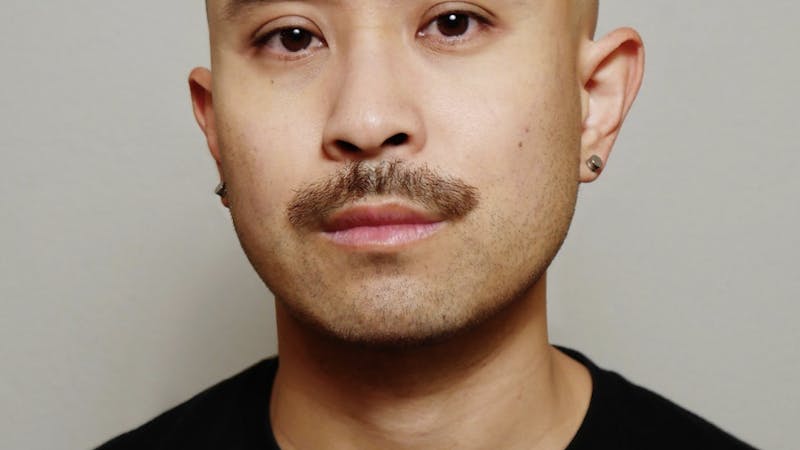Tiered system for parking fees proposed; Greenbriar to be cheaper
The University Standing Committee on Parking, composed of students, faculty and staff met Wednesday to draft a letter of recommendation to President David Leebron for next year that includes changes in parking policy and rates. The committee suggested a plan to redesign the Greenbriar Lot to hold more spaces and to return to the tiered system of parking. Hanszen College senior Eric Max, who serves on the committee, said the committee is trying to decrease all parking rates but will more likely focus on one low-priced student option.
"[This] will most likely involve [lowering the cost of] the Greenbriar Lot," Eric Max, who is on the committee, said. "But there have been issues with construction parking at that lot that will make that change difficult."
Recently, Rice University Police Department found out that Linbeck, the company building the Collaborative Research Center, had been telling its construction workers from a non-Rice project in the Texas Medical Center to park in the Greenbriar Lot. While Rice allows its construction workers free parking, Max said the Greenbriar Lot is now full, though it never was before.
One major change that the committee is pushing for is redesigning the Greenbriar Lot so that it has more spaces. This change will be made by drawing the parking spots more effectively and moving a row of reserved donor parking spots to the South Stadium Lot. This change is especially relevant because workers for all of the ongoing construction around campus have been assigned to park in the Greenbriar Lot, and the construction companies have asked for an additional 200 spots.
"The construction parking has not yet reached its peak," Vice President for Administration Eugen Radulescu said.
Max said the committee tried to figure out ways to make Greenbriar Lot more affordable for students. Though the Greenbriar Lot is the most inexpensive choice right now, students pay a $141 lot fee on top of the $220 student surcharge.
"We intend for students to have a financial incentive to park legally at Greenbriar by making it significantly cheaper," Max said. "Right now, for $361 it's cheaper to get caught and towed by [RUPD] than to pay for the permit."
Max said an estimated 200 students park regularly at Greenbriar without a permit and only 50 or so students actually pay for their spots. The Greenbriar Lot currently has about 1,500 spaces, but the lot is on average 85 percent full, and sometimes the demands on the lot are so great that the Beer-Bike track has to be closed off for parking. If the restriping of the lot goes as planned, the lot will have 500 additional spaces.
A recent Student Association poll about parking has led the students on the committee to also push for a return to the tiered system of parking so that students would pay different amounts depending on their graduating classes. Under this plan, freshmen would pay a higher parking fee than would the seniors. Though the exact numbers will not be available until Leebron approves the recommendations - perhaps by Monday, although the exact date is uncertain - returning to the tiered system will result in a lowering of the average parking permit price for students, Max said.
Max said student and faculty parking fees more than compensate for the parking costs. After factoring in the costs of shuttle-bus operation, however, he said transportation consistently runs a deficit each year. He said the Parking Committee has used this fact to justify raising parking rates in recent years.
Other recent changes include changing the North Lot Annex to a mixed contract and visitor parking lot, while the North Lot will be mixed after 5:30 p.m. on weekdays and on weekends.
Also, the Athletics Department is constructing a plaza between Autry Court and the Tennis Center, which will take away about 30 spots from the Hess Court Lot, and the entrance to that lot will have to be moved from its current location.
Three levels of underground parking have been completed at the site of the still-under-construction CRC.
"We're trying to get an improved parking situation for students next year," committee chair Phil Bedient, a Civil Engineering professor, said.
The recommendations will be finalized by the end of next week with the help of SA President Matt Youn and will then be sent to Leebron for review.
More from The Rice Thresher

Worth the wait: Andrew Thomas Huang practices patience
Andrew Thomas Huang says that patience is essential to being an artist. His proof? A film that has spent a decade in production, a career shaped by years in the music industry and a lifelong commitment to exploring queer identity and environmental themes — the kinds of stories, he said, that take time to tell right.

Andrew Thomas Huang puts visuals and identity to song
Houston is welcoming the Grammy-nominated figure behind the music videos of Björk and FKA twigs on June 27.

Live it up this summer with these Houston shows
Staying in Houston this summer and wondering how to make the most of your time? Fortunately, you're in luck, there's no shortage of amazing shows and performances happening around the city. From live music to ballet and everything in between, here are some events coming up this month and next!

Please note All comments are eligible for publication by The Rice Thresher.